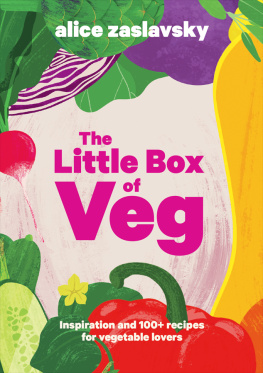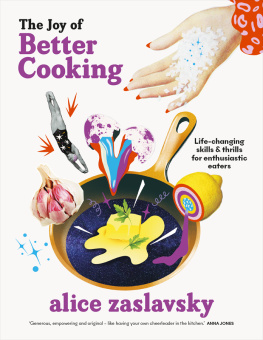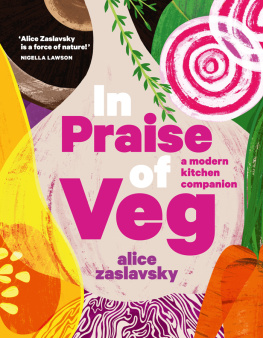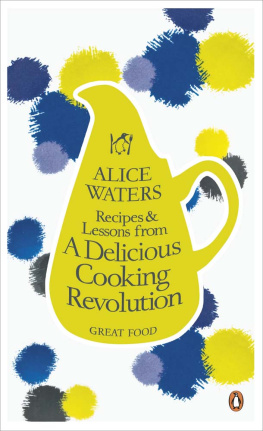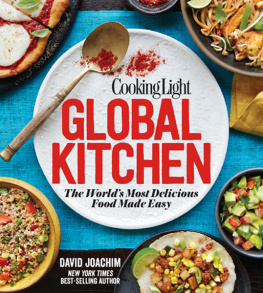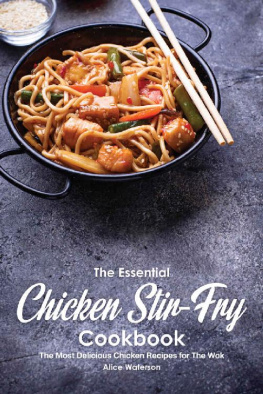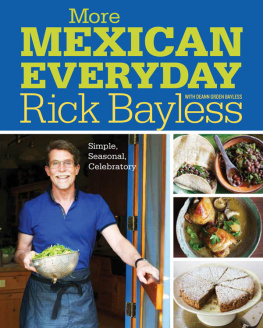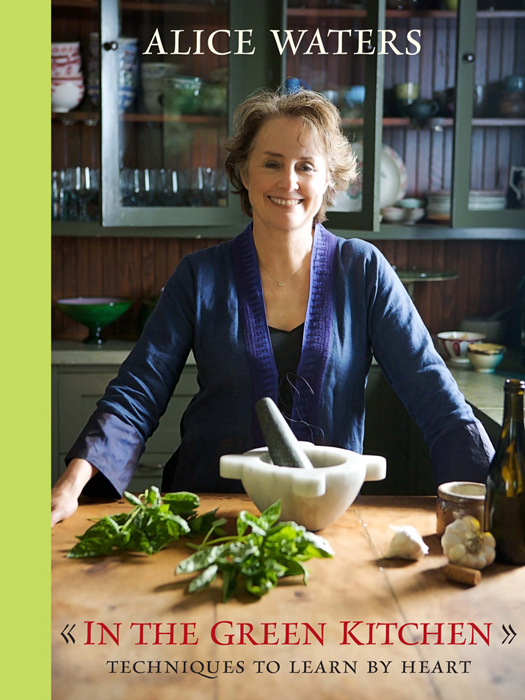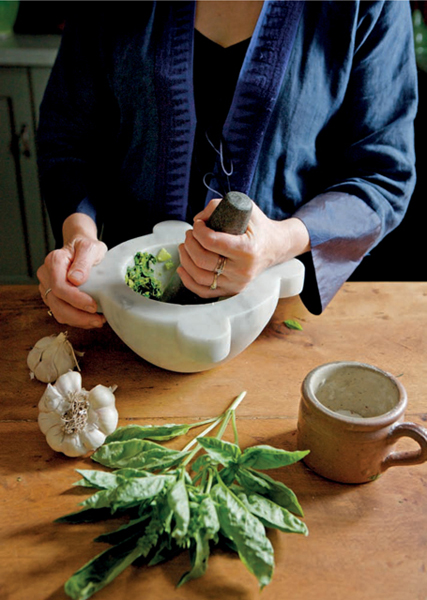
Copyright 2010 by Alice Waters
Photographs 2010 by Christopher Hirsheimer
All rights reserved.
Published in the United States by ClarksonPotter/Publishers, an imprint of the Crown Publishing Group, a division of Random House, Inc., New York.
www.crownpublishing.com
www.clarksonpotter.com
C LARKSON P OTTER is a trademark and POTTER with colophon is a registered trademark of Random House, Inc.
Library of Congress Cataloging-in-Publication Data is available upon request.
eISBN: 978-0-307-88557-9
v3.1
Proceeds from In the Green Kitchen will benefit the Chez Panisse Foundation in support of Edible Educationa national movement to change the way children eat and how they learn about food in the public schools. The Edible Schoolyard in Berkeley, California, is a hopeful and nourishing curriculum that engages all children in the growing of a garden, in the cooking of food, and in the pleasure of the table. This book is dedicated to the students of Martin Luther King Middle School.
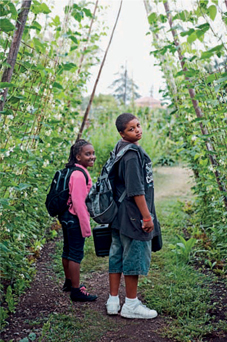
CONTENTS
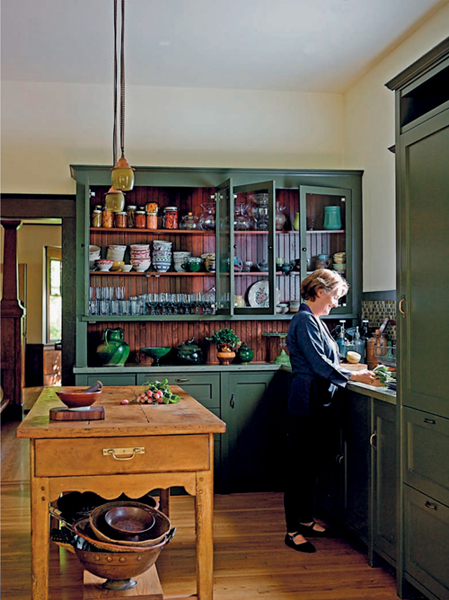
WHAT IS THE GREEN KITCHEN?
The Green Kitchen began at a large, joyous gathering in San Francisco that attracted thousands of cooks and eaters, farmers and ranchers, cheese makers and winemakers, bakers and beekeepers, fishermen and foragersall united by a passion for food and for a sustainable future. I was lucky enough to be one of the organizers of this event, which was called Slow Food Nation. We knew people were coming from all over the country to taste and learn, so we decided to include a demonstration kitchen to show what all good cooks have in common: a set of basic techniques that are universal to all cuisines. Once learned by heart, these are the techniques that free cooks from an overdependence on recipes and a fear of improvisation.
The basic techniques of good cooking do not require a lavish kitchen or a lot of specialized equipment. Far from it: For our demonstration kitchen at Slow Food Nation, all we had was a table, a couple of sharp knives and a cutting board, a hot plate and a few pots, a mortar and pestle, and a compost bucket. We called it the Green Kitchen, and we invited a diverse group of well-known and not-so-well-known cooks to give short presentations there. We also invited Christopher Hirsheimer and Melissa Hamilton to photograph the presenters. Christopher and Melissas portraits of the cooks appear here with the simple techniques they demonstrated, which I have explained in my own voice, sometimes illustrating them with my own slightly different recipes, while remaining as faithful to their intentions as posible. (The demonstrations can also be seen online, at www.alicewatersgreenkitchen.com.) Ive also included additional recipes of my own, and some elementary guidelines for equipping your own green kitchen and for stocking it with the provisions you need for fresh and healthy meals.
At home in their own kitchens, even the most renowned chefs do not consider themselves to be chefs; there, they are simply cooks, preparing the simple, uncomplicated food they like best. Preparing food like that does not have to be hard work. On the contrary, the whole processthinking about food, deciding what you want to eat, shopping for ingredients, and, finally, cooking and eatingis the purest pleasure, and too much fun to be reserved exclusively for foodies. Cooking creates a sense of well-being for yourself and the people you love and brings beauty and meaning to everyday life. And all it requires is common sensethe common sense to eat seasonally, to know where your food comes from, to support and buy from local farmers and producers who are good stewards of our natural resources, and to apply the same principles of conservation to your own home kitchen.
All the good cooks I know are sensualists who take great pleasure in the beauty, smell, taste, and feel of the ingredients. They cook with their hands. Touch conveys so much about freshness, ripeness, condition, and texture. Our hands are amazingly sensitive tools. The best way to judge the doneness of a steak on the grill or a piece of fish in the oven is to touch it: How tender or resistant it feels will tell you how rare or cooked it is. The best way to toss a bowl of delicate salad greens is with your fingers: You wont crush the tender leaves and you can feel when there is enough, but not too much, dressing. With practice, your hands will remember, and these skills will become natural and automatic.
The value of learning a foundation of basic techniques is that once these skills become instinctive, you can cook comfortably and confidently without recipes, inspired by the ingredients you have. This book has recipes, of course, but they are intended as examples of methods and techniques that apply to all cooking everywhere. Once you have mastered a few dishes by making them repeatedlysuch as a dinner of roast chicken with oven-roasted potatoes and turnips, and a garden salad with garlic vinaigretteyou will be rewarded with satisfying meals and a great sense of accomplishment. There is enormous pleasure in cooking good food simply and in sharing the cooking and the eating with friends and family. I think it is the best antidote to our overstressed modern lives. And there is nothing better than putting a plate of delicious food on the table for the people you love.
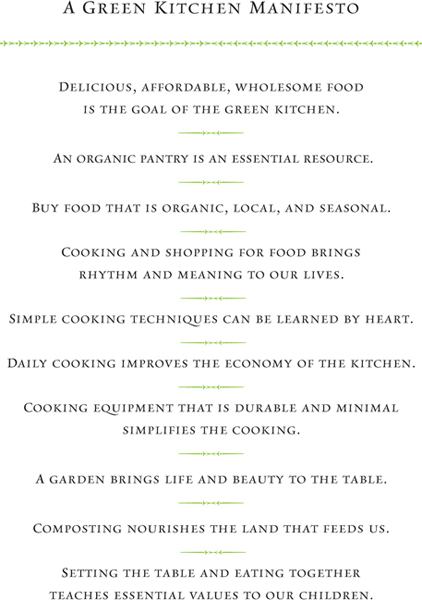
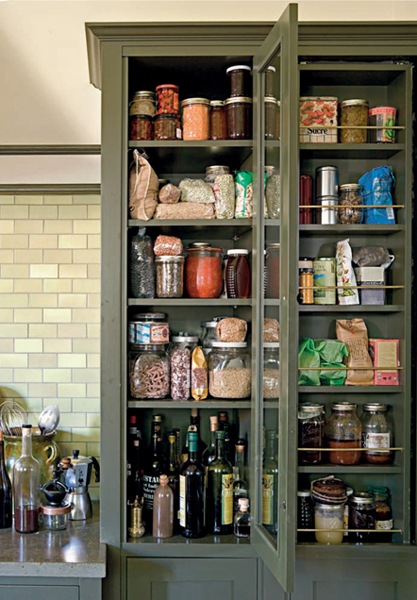

The most important part of cooking is shopping and provisioning, before the real cooking begins. Not only is it difficult to make something delicious from inferior ingredients, but when you have raw food that has life and flavor, simple cooking is all that is needed. My mantra is: organic, local, and seasonal. Freshness is key. Vegetables and fruit just harvested have a vitality that you can see and taste and smell. That is one of the arguments for buying locally produced food; the closer you are to the source, the fresher the food is likely to be. That the food is organic is also critical. It will taste the best because it will have been grown in healthy soil. The food we eat is simply not wholesome if it contains harmful chemical residues. And by choosing to buy food from farmers and ranchers who produce food organically, we support the people who are taking care of the environment and nurturing the soil.
There are certain ingredients that I always want to have on hand in the kitchen. They fall into two general categories: the less perishable stores like oils and vinegars, and rice and beans, which are replenished less frequently; and the very perishable fresh produce, dairy, eggs, and meats, which are in constant rotation through the kitchen.



